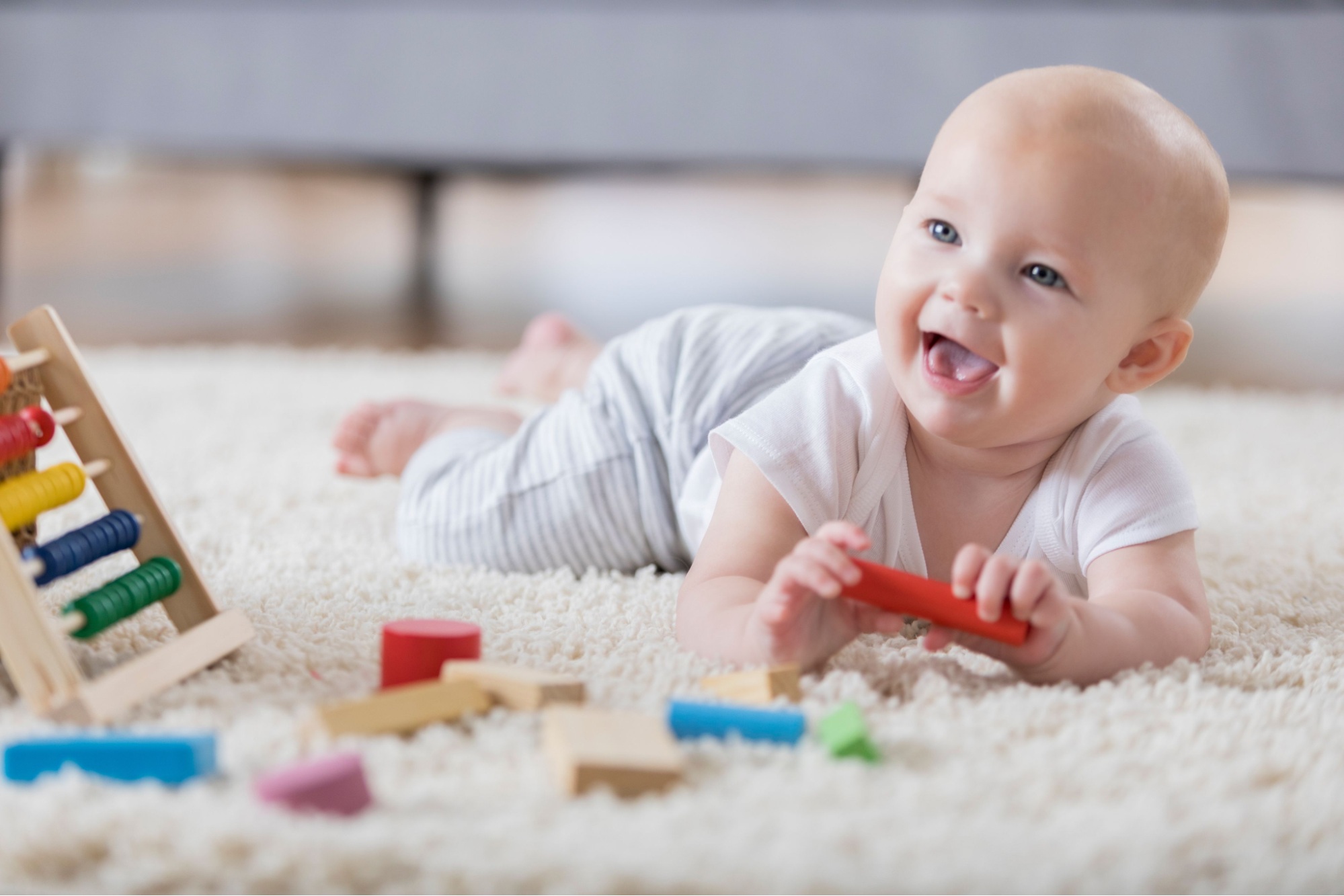Picture Courtesy of verywellfamily.com
Gross motor skills involve the use of large muscles in the arms, legs and trunk to complete whole body movements like crawling, walking, running and jumping. Every child is unique and develops skills differently. However, gross motor milestones (listed below) can act as a reference for a child’s development.
0-2 months
- Turns head to both sides when laying on back
- Kicks arms and legs equally when laying on back
- Lifts and turns head briefly during tummy time
3-5 months
- Rolls from tummy to back
- Props on forearms when on tummy
- Rolls from back to tummy
- Brings hands together at midline; brings hand(s) to mouth; brings feet to mouth
- Reaches/swats for toys when laying on back
- Holds head up and maintains control when in a supported sitting position
6-9 months
- Independently sits
- Pushes up on hands when laying on stomach; pivots in a circle on stomach
- May get in to crawling position on hands and knees
9-12 months
- Moves in and out of the sitting position
- Creeps or crawls on hands and knees
- Pulls to stand on stable objects
- Cruises (side steps) along stable objects
- May begin standing and/or walking independently
1-2 years
- Stands without support
- Walks independently
- Begins to walk faster with legs coming closer together
- Can push self forwards and backwards on a riding toy
- Walks while carrying a toy
- Runs
- Walks up stairs with support
- May begin to jump
2-3 years
- Jumps up and forwards
- Catches a playground ball
- Kicks ball with either foot
- Walks up stairs alternating feet holding rail
- Walks down stairs with support
3-4 years
- Pedals and steers a tricycle
- Hops on one foot
- Walks up stairs alternating feet without holding rail
4-5 years
- Walks down stairs alternating feet without holding rail
- Balances on one foot for 4-5 seconds
- Gallops
5-6 years
- Skips
- Rides a bicycle with or without training wheels
- Swings on swing, pumping legs
If you have concerns regarding your child’s gross motor development, a pediatric physical therapist can help by providing an extensive evaluation of the child’s strength, balance and coordination. After identifying any barriers to gross motor development, the therapist can establish an individualized plan to help promote motor development.

